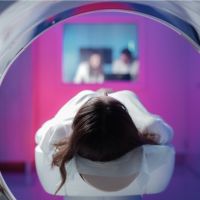Researchers, led by Prof. Luisa Stark, from the Department of Radiation Oncology, University Hospital Zurich, University of Zurich, Switzerland presented results from a study on “Development of a phantom for adaptive end-to-end testing in magnetic resonance guided radiotherapy (MRgRT)” at the Virtual 8th MR in RT Symposium 2021, organised by the German Cancer Research Center (DKFZ) from 19 Apr 2021 to 21 Apr 2021.
In recent times, more demands are placed on quality assurance (QA) as in-room MR imaging for radiotherapy treatments is steadily increasing. These new demands on the phantoms relate to the features of MRgRT regarding material, handling and visibility. There is a paucity of commercially available phantoms to test and adaptive workflow. Moreover, the existing phantoms are basically a plexiglass container filled with water. As a result, the surface is not visible in MR images, making image registration and deformation in the adaptive workflow difficult. The aim of this study was to demonstrate the feasibility of end-to-end tests for an adaptive workflow by using an in-house developed silicon rubber phantom including air, water and bone structures.
The researchers created a silicon, cuboid rubber phantom with an integrated frame for film measurements. It has various cavities which can be filled with water or gypsum or left empty to simulate air bubbles. The gypsum simulated bone structure. The team computed an IMRT plan (including 11 beams prescribing 3Gy to the 65% isodone line) on a homogeneous silicon phantom. In addition, the electron density map was updated to accommodate the changed anatomy and a new optimization was carried out. Finally, the adapted plan was irradiated on the phantom and the dose distribution was measured in the central horizontal plan with radiochromic film.
Results showed that the MR signal was visible in the entire phantom, which improved adaptive workflow and image registration. This can be attributed to the silicon rubber (252 ± 18 HU) and the gypsum (560 ± 65 HU). The mean gamma passing rate (for five measurements) was 98% ± 2% with a criterium of 2%/2mm. Therefore, it is suited to test adaptive workflow in MRgRT; the 2D dose distributions showed high dosimetric and geometric precision.
As a consequence of the feasibility of this in-housed developed phantom, a more advanced version is currently being developed. This version will depict realistic anatomy and moving organ surrogates, and enable chamber measurements.
Source: German Cancer Research Center (DKFZ)
Image credit: Mritools



























